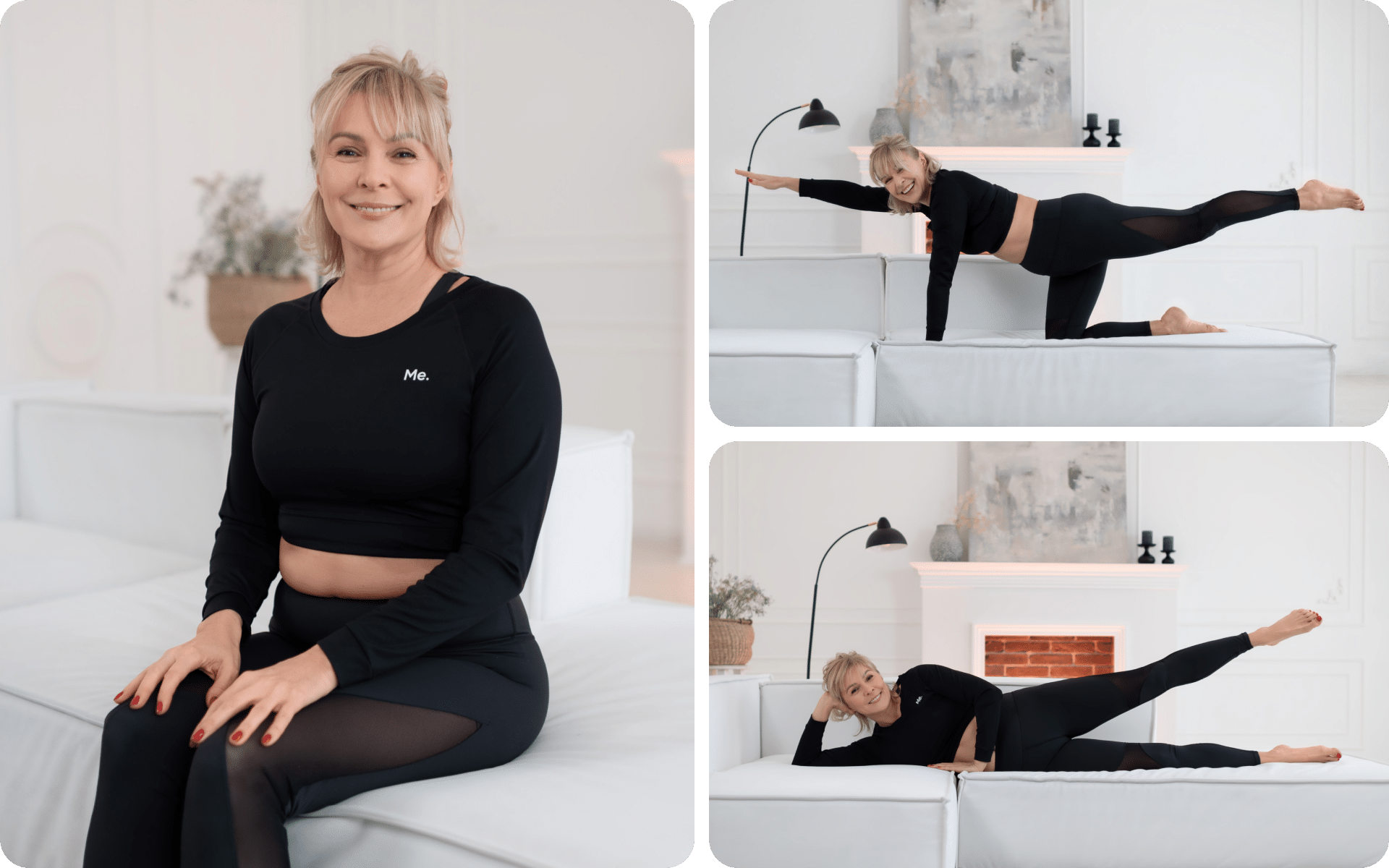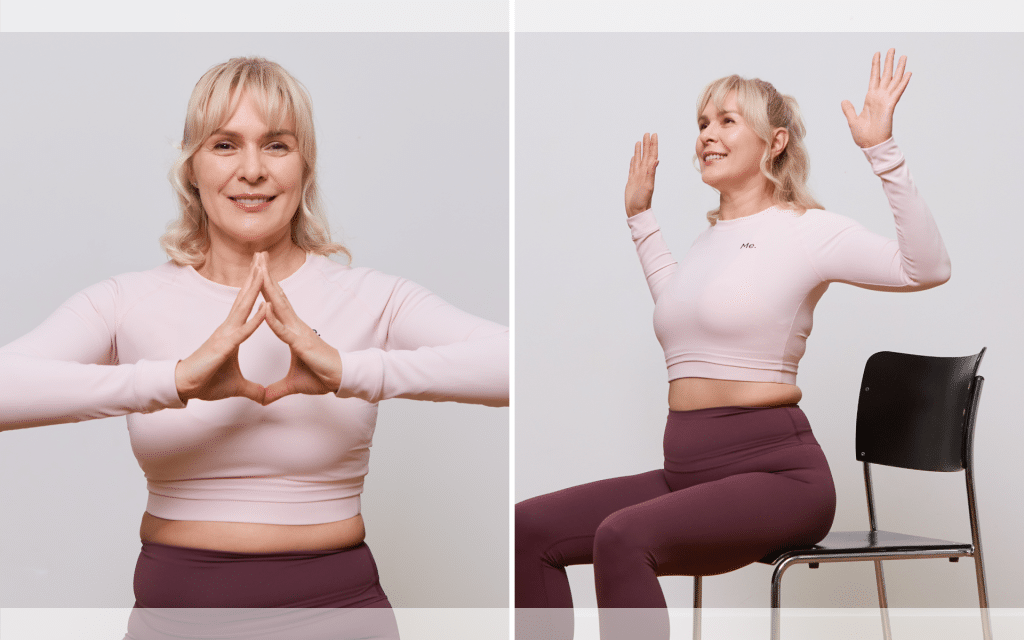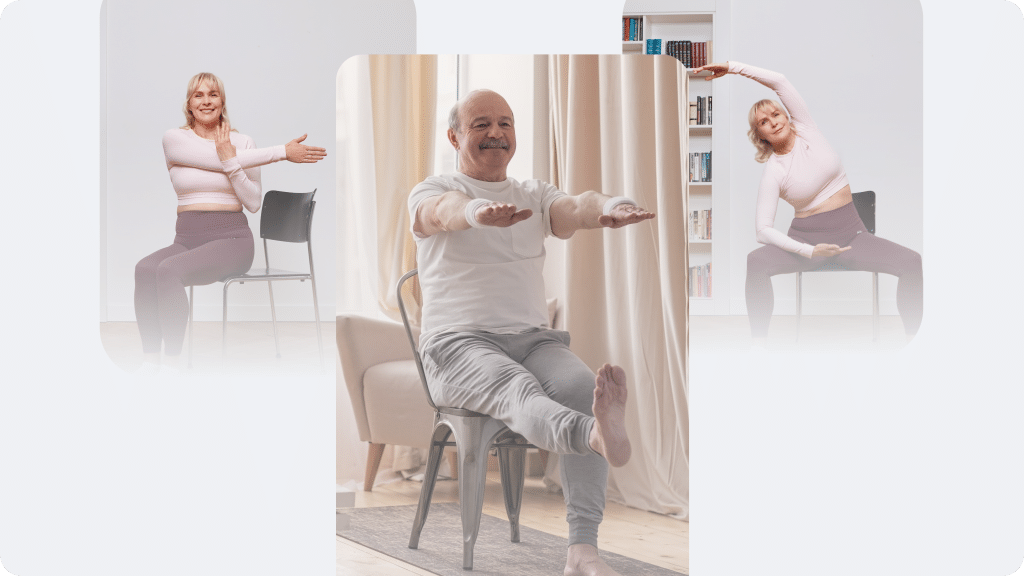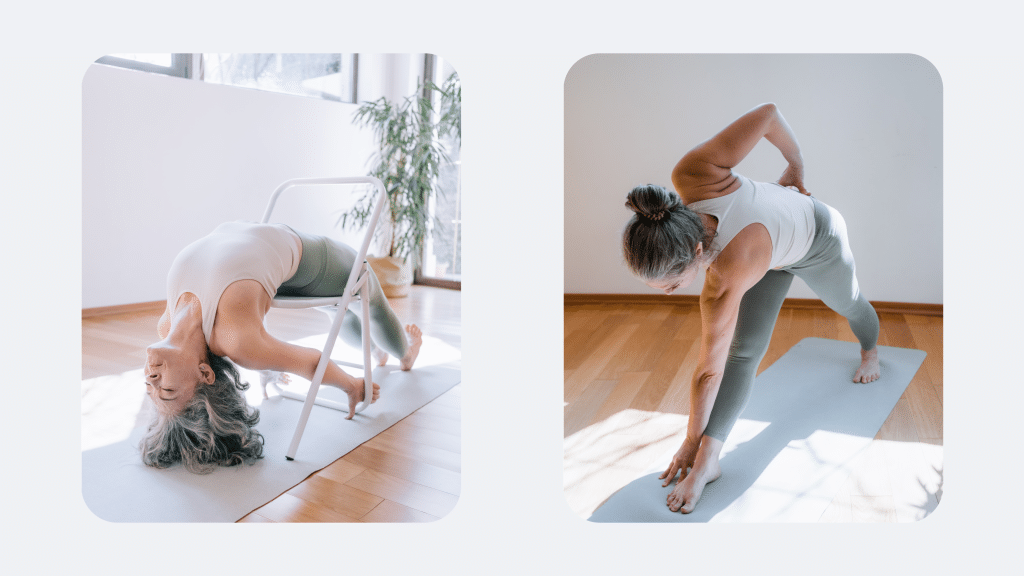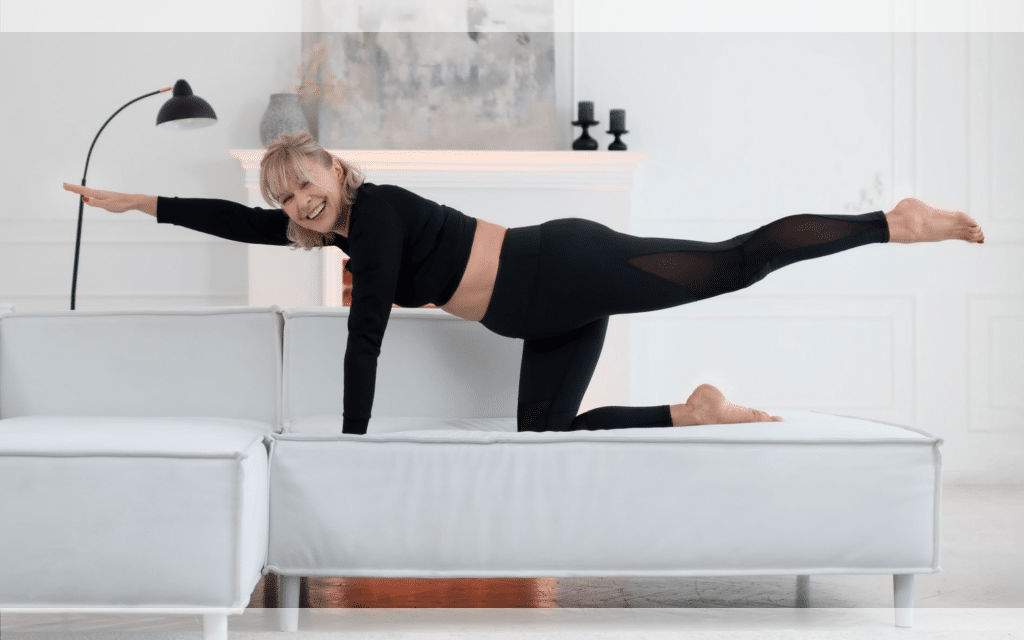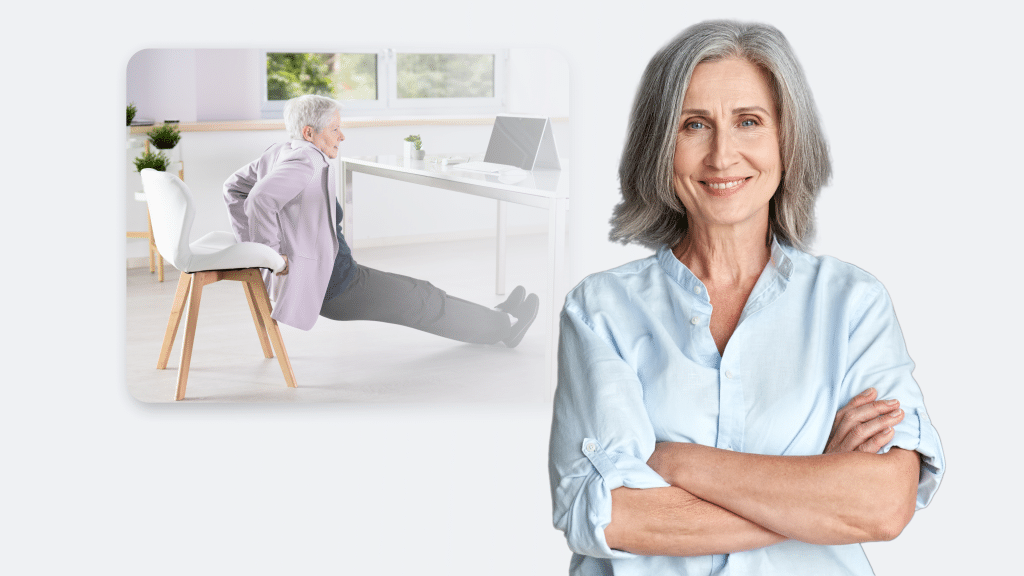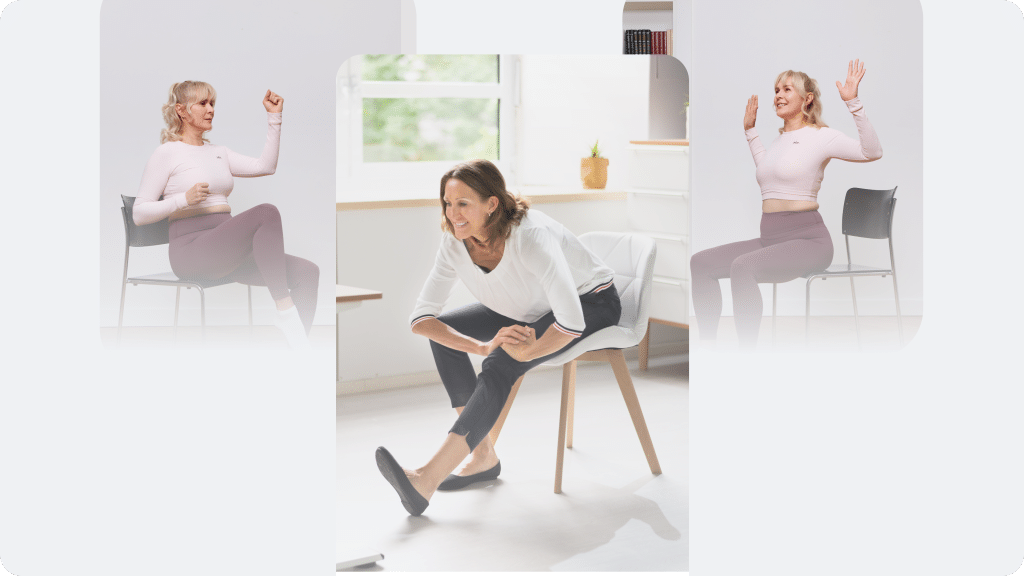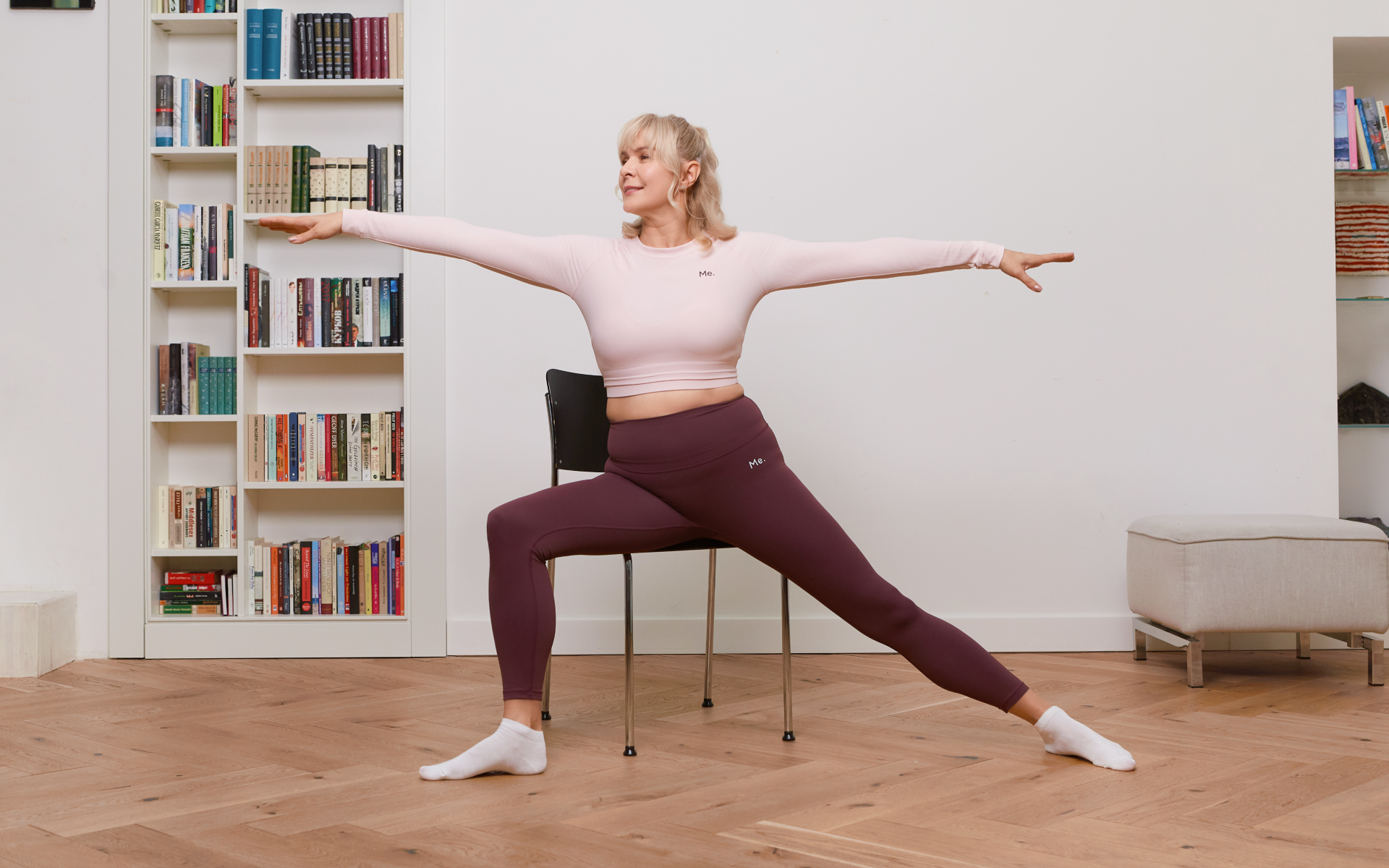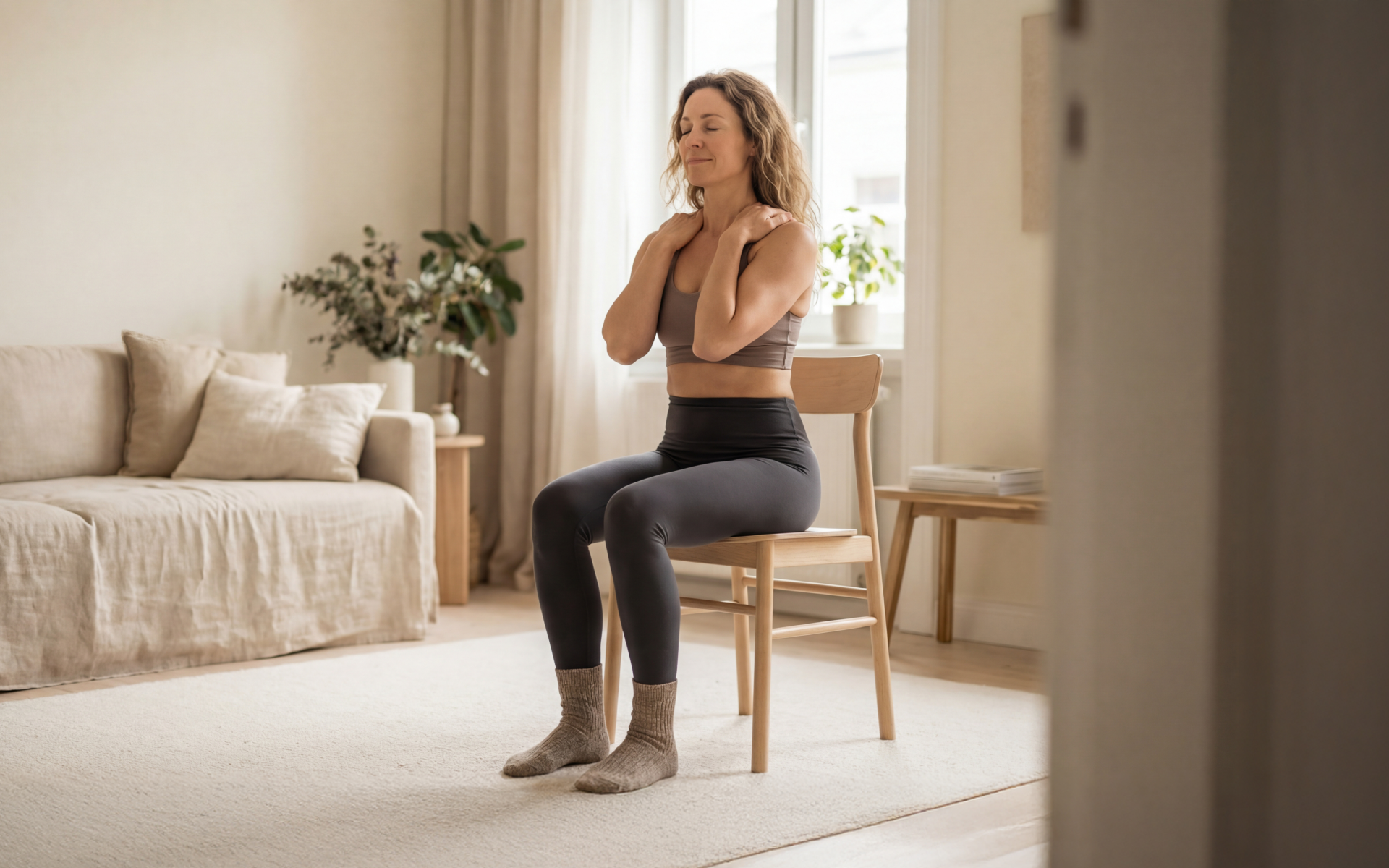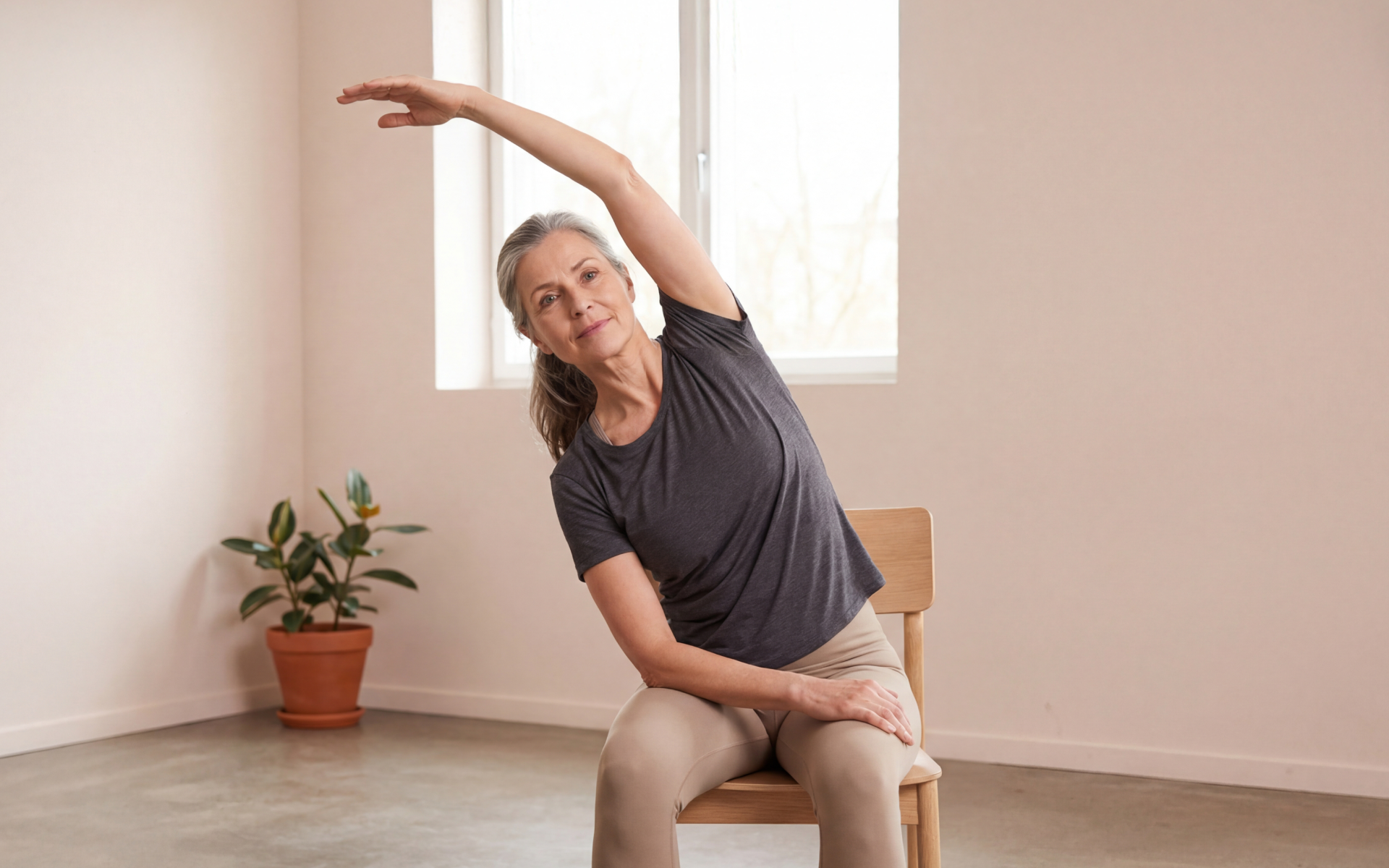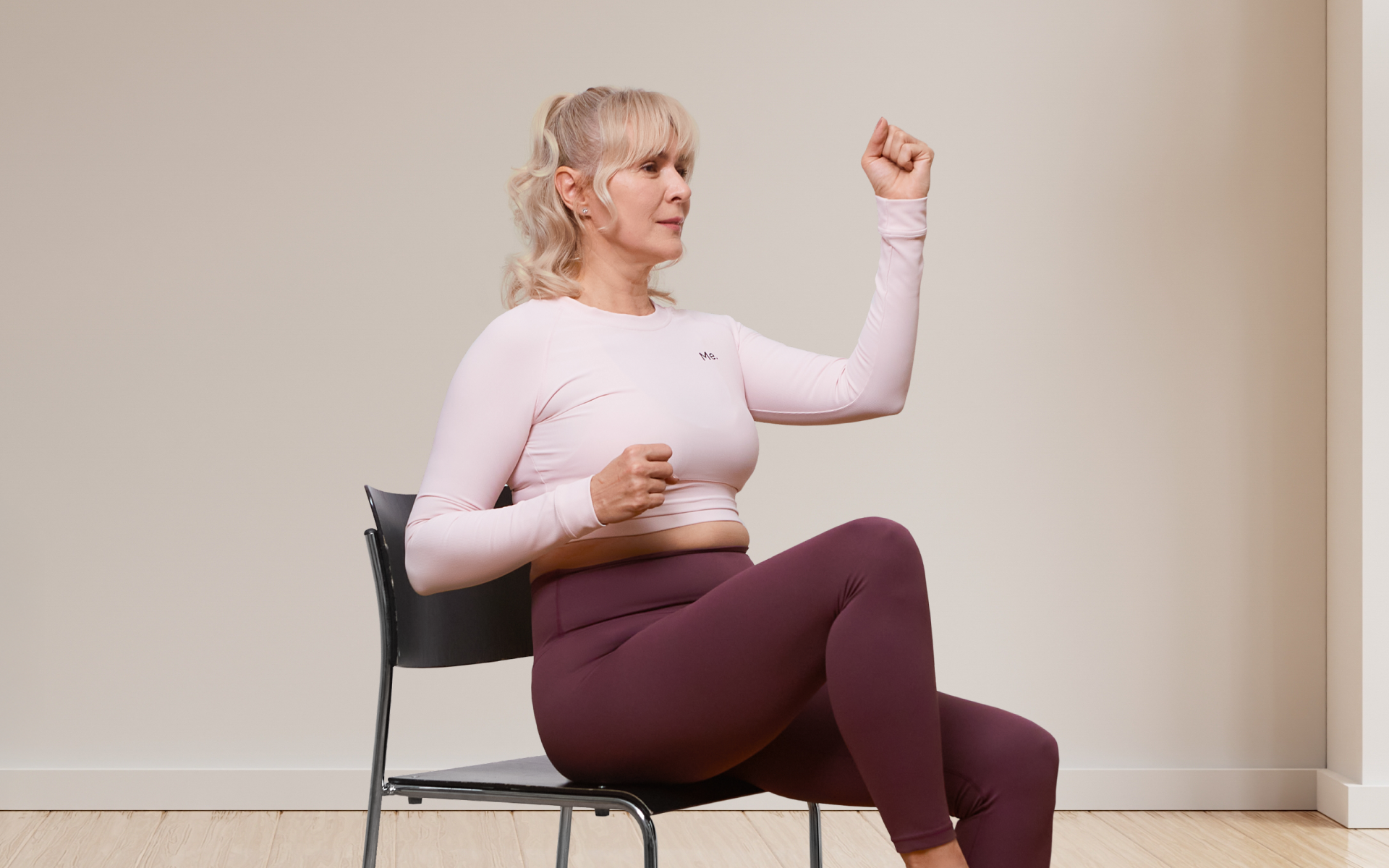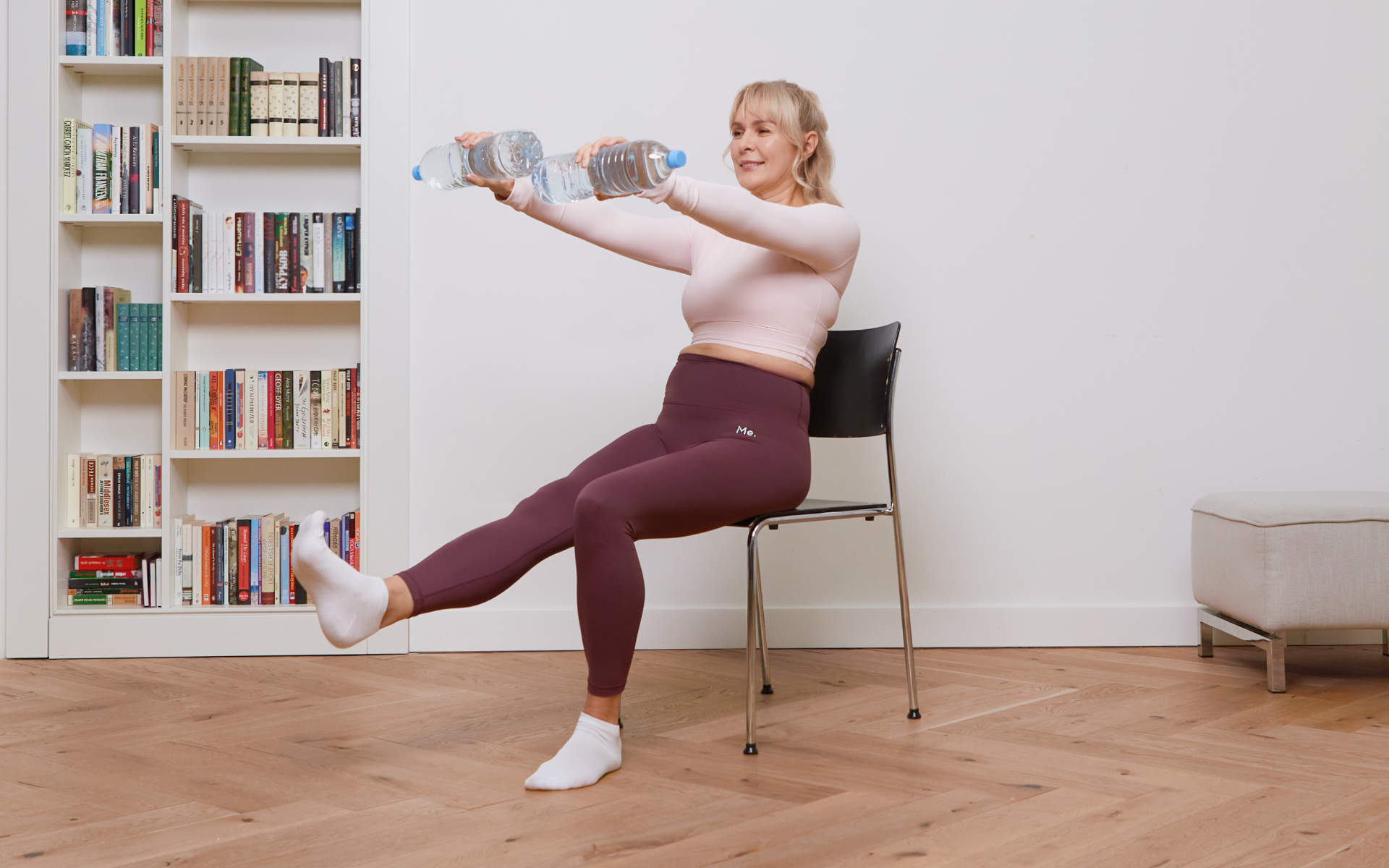Poor leg mobility can be a literal pain. A shooting, sharp pain in your knees, hips, or lower back can hinder your physical performance and also affect your everyday life. A lack of mobility can often result in compensating with other muscles, which can lead to imbalances and potential injuries.
The good news is that there are simple leg mobility exercises that can help improve your range of motion and alleviate any discomfort you may be experiencing.
Mobility exercises work on your joints, improve flexibility, and allow for proper movement patterns. They can also help prevent injuries by strengthening the muscles that surround your joints and increasing stability.
These exercises will target key areas such as the ankles, hips, and knees to help increase overall leg mobility.
Here’s what you need to know:
Why Is My Leg Mobility So Bad?
Your leg mobility may be affected by underuse or overuse of the muscles surrounding your joints.
Here are some reasons why your leg mobility may be lacking:
You’ve Been Sitting Too Much
Sitting for extended periods of time can lead to tight hip flexors and weak glutes, which can affect the range of motion in your hips and knees (1).
You Have Poor Sitting Posture
Sitting with poor posture can also contribute to tight hip flexors and weak glutes, in addition to a rounded lower back which can affect the mobility of your spine and hips (2).
You Don’t Incorporate Enough Movement Variations
Repetitive movements or lack of variation in your exercises can lead to imbalances and limited range of motion (3). An example of this is always performing the same exercises or sticking to a specific routine without incorporating any different movements. Training in the 3 main planes of motion will allow for improvements in functional strength. This translates to increased athletic ability as well as better performance in everyday tasks.
You’ve Overtrained
A runner who constantly trains on the same flat surface and doesn’t incorporate any hill or stair training may develop imbalances in their leg muscles, which can lead to reduced mobility. Overtraining can also lead to tightness in the muscles, limiting their ability to move properly (4).
Whether you’re a workout beast or just a beginner making your first foray into the world of fitness and dieting – BetterMe has a lot to offer to both newbies and experts! Install the app and experience the versatility first-hand!
You Don’t Warm Up or Cool Down Properly
Skipping a proper warm-up and cool-down can also contribute to poor leg mobility. Warming up helps increase blood flow and prepare your muscles for movement, while cooling down allows for proper recovery and can help prevent tightness in your muscles (5).
We discussed warming and cooling down movements in our Static Stretches article.
You’re Training Without Mobility Exercises
Simply focusing on strength and cardio training without incorporating mobility exercises can lead to imbalances and limited range of motion. It’s important to incorporate specific exercises that target mobility in your routine.
Now you understand why your leg mobility may be lacking, let’s look at 7 amazing exercises to improve it.
Read more: Pilates for Flexibility: Stretching Your Limits
How Do I Get More Mobility in My Legs?
You can improve your leg mobility by incorporating exercises that target the key areas of your legs. The hip flexor stretch, pigeon pose, and glute bridge are just a few examples of exercises that can help increase your range of motion.
In addition to these specific exercises, it’s important to:
- Warm-Up Properly: Always start with a proper dynamic warm-up to increase blood flow to your muscles.
- Stay Consistent: Consistency is key. Incorporate mobility exercises into your routine regularly. Mobility exercises can even be done daily and don’t require the same rest periods that strength training exercises do.
- Use Proper Form: Ensure you’re using the correct form to avoid injury and get the most out of each exercise (6).
- Hydrate and Eat Well: Proper nutrition and hydration can help with muscle recovery and flexibility (7).
- Listen to Your Body: Don’t push through pain. If something feels off, take a break or modify the exercise.
What Are the Best Leg Mobility Exercises?
Below are some of the best leg mobility exercises:
1. Pigeon Pose Hip Stretch
Instructions:
- Start in a tabletop position on your hands and knees.
- Bring your right knee forward and place it behind your right wrist. Your right ankle should be near your left wrist.
- Extend your left leg straight back, keeping your foot relaxed.
- Lower your hips towards the floor, making sure to keep them square.
- Hold the stretch for 30-60 seconds, then switch legs.
Tips:
- Use a yoga block or cushion under your hip for extra support if needed.
- Avoid forcing your hips to the floor; only go as low as you find comfortable.
2. Cossack Squat
Instructions:
- Stand with your feet wider than shoulder-width apart.
- Shift your weight to your right leg, bending your knee and lowering your hips as if sitting back into a squat.
- Keep your left leg straight and your toes pointing upward.
- Push through your right heel to return to the starting position.
- Repeat on the left side. Perform 10-12 reps per side.
Tips:
- Keep your chest up and back straight throughout the movement.
- Use a weight for added resistance if you’re comfortable with it.
3. Shin Box Switch
Instructions:
- Sit on the floor with your knees bent and your feet flat.
- Drop both knees to the right, creating a 90-degree angle with each leg.
- Lift your knees and switch them to the left side, maintaining the 90-degree angles.
- Continue alternating sides for 10-12 reps.
Tips:
- Keep your torso upright and avoid leaning back.
- Use your hands for support if needed.
4. Lying Leg Swings
Instructions:
- Lie on your back with your arms extended out to the sides.
- Raise your right leg to form a 90-degree angle with your body.
- Swing your right leg across your body toward your left hand, keeping your shoulders flat on the ground.
- Swing your leg back to the starting position.
- Perform 10-12 swings on each leg.
Tips:
- Move within a comfortable range of motion.
- Control the movement to avoid any jerking.
5. Frog Stretch
Instructions:
- Start on all fours with your knees spread wide apart.
- Lower your hips back toward your heels.
- Keep your feet turned out and the inner edges of your feet on the floor.
- Lower your forearms to the floor and hold the stretch for 30-60 seconds.
Tips:
- Go only as wide as you find comfortable.
- Use a cushion under your knees for added comfort.
6. 90/90 Hip Switch
Instructions:
- Sit on the floor with your knees bent and your feet flat.
- Drop both knees to the right, creating a 90-degree angle with each leg.
- Rotate your torso towards the right knee and hold for a few seconds.
- Switch sides and repeat. Perform 10-12 reps per side.
Tips:
- Keep your torso upright.
- Use your hands for support if necessary.
7. Deep Lunge with Rotation
Instructions:
- Start in a lunge position with your right foot forward and left foot back.
- Lower your left knee to the ground.
- Place your left hand on the floor and twist your torso to the right, reaching your right arm toward the sky.
- Hold for a few seconds, then return to the starting position.
- Repeat on the other side. Perform 10-12 reps per side.
Tips:
- Keep your core engaged.
- Ensure your front knee is directly above your ankle.
8. Lateral Leg Swings
Instructions:
- Stand next to a wall or support for balance.
- Swing your right leg across your body to the left and then out to the right.
- Perform 10-12 swings, then switch legs.
Tips:
- Keep the movement controlled.
- Avoid swinging too high to prevent strain.
9. Kneeling Adductor Stretch
Instructions:
- Start in a high kneeling position with your knees wider than hip-width apart.
- Extend your right leg out to the side with your foot flat on the ground.
- Shift your hips back toward your heels.
- Hold for 30-60 seconds, then switch sides.
Tips:
- Keep your back straight.
- Use a yoga mat for added knee comfort.
10. Prone Quad Stretch
Instructions:
- Lie on your stomach with your legs extended.
- Bend your right knee and grab your right ankle with your right hand.
- Gently pull your heel toward your glutes.
- Hold for 30-60 seconds, then switch legs.
Tips:
- Keep your hips pressed into the ground.
- Use a strap if you can’t reach your ankle.
11. Figure Four Stretch
Instructions:
- Lie on your back with your knees bent and feet flat on the floor.
- Cross your right ankle over your left thigh.
- Lift your left foot off the ground and gently pull your left thigh toward your chest.
- Hold for 30-60 seconds, then switch sides.
Tips:
- Keep your lower back pressed into the ground.
- Avoid pulling too hard to prevent strain.
If you wish to free yourself from all the extra pounds that have been weighing you down for way too long, start using the BetterMe: Health Coaching app and overhaul your entire life!
12. Elevated Hamstring Stretch
Instructions:
- Place your right heel on an elevated surface, such as a bench or step.
- Keep your leg straight and your toes pointing upwards.
- Lean forward from your hips, reaching toward your toes.
- Hold for 30-60 seconds, then switch legs.
Tips:
- Keep your back straight.
- Avoid bouncing to prevent injury.
13. Butterfly Stretch with Forward Fold
Instructions:
- Sit on the floor with your feet together and your knees bent out to the sides.
- Hold your feet with your hands.
- Gently press your knees toward the ground.
- Lean forward from your hips, reaching toward your feet.
- Hold for 30-60 seconds.
Tips:
- Keep your back straight.
- Use a cushion under your hips for added comfort.
14. Seated Piriformis Stretch
Instructions:
- Sit on the floor with your legs extended.
- Cross your right leg over your left, placing your right foot flat on the floor.
- Twist your torso to the right, placing your left elbow on the outside of your right knee.
- Hold for 30-60 seconds, then switch sides.
Tips:
- Keep your back straight.
- Use your hand for support to deepen the stretch.
How Long Does it Take to Build Mobility?
It can take anything from a couple of weeks to several months before you see significant improvements in mobility. The amount of time it takes depends on various factors such as your starting point, consistency of practice, and your body’s response to stretching.
Consistency is key when it comes to building mobility. Regularly incorporating dynamic and static stretches into your workout routine can help improve flexibility and range of motion over time.
It’s important to listen to your body and not to push yourself too hard or too fast. Gradually increasing the intensity and duration of your stretches can help prevent injury and allow your muscles and joints to adapt more effectively.
In addition, proper nutrition, hydration, and getting enough rest can also play a role in improving mobility. Adequate protein intake can help support muscle growth and repair, while staying hydrated can prevent stiffness and cramping.
Building mobility is a continuous process and requires patience, persistence, and proper form. With regular practice and the right mindset, you can gradually improve your flexibility and movement capabilities to enhance your overall fitness and wellness.
These Ankle Mobility Exercises are exactly what you need for stronger ankles.
Read more: 13 Ankle Strengthening Exercises That Will Help You Avoid Injury
Is it Ok to Do Leg Mobility Exercises Every Day?
It’s okay to do leg mobility exercises every day, as long as you don’t experience any pain or discomfort. It’s recommended to listen to your body and only perform the stretches that feel comfortable for you.
If you’re new to stretching, start slowly and gradually increase the frequency and intensity of your sessions over time. Doing leg mobility every day can help maintain and improve flexibility, range of motion, and muscle function in your legs.
However, it’s important not to overdo it as this can lead to muscle soreness or injury. Make sure to give yourself rest days and vary the types of stretches you do each day. It’s also important that you breathe throughout these movements and try your best to relax your body. Proper breathing can allow you to get a deeper stretch and force you to control your movements even more.
Yes, it’s possible to increase mobility with regular stretching and proper form. By incorporating a variety of dynamic and static stretches into your routine and gradually increasing the intensity over time, you can improve flexibility, range of motion, and joint function. There is no specific age at which an individual starts to lose mobility. Factors such as lifestyle, genetics, and previous injuries can all affect an individual’s mobility at different ages. However, it’s important to regularly maintain and improve mobility throughout your life to prevent stiffness and decrease the risk of injury. Our Wall Stretches article has moves you can do anywhere. Stretching and mobility are both important for maintaining flexibility, range of motion, and joint function. Stretching involves holding a position for an extended period to lengthen muscles, while mobility is focused on moving joints through their full range of motion. Neither is necessarily better than the other; they both serve different purposes in promoting optimal physical health. Setting aside 5-10 minutes each day to focus on mobility can be beneficial for your overall health and fitness. Pay close attention to how your body responds and adjust accordingly. It’s important to listen to your body and not to push yourself too hard or perform stretches that cause pain or discomfort.Frequently Asked Questions
Is it possible to increase mobility?
At what age do you lose mobility?
Which is better, stretching or mobility?
Should I train mobility every day?
The Bottom Line
Leg mobility is essential for maintaining your overall physical health and fitness. By incorporating a variety of stretches into your routine and listening to your body, you can improve flexibility, range of motion, and joint function in your legs. The 14 exercises listed above are just a few examples of stretches you can perform to improve leg mobility. Remember to start slowly, gradually increase intensity and frequency, and always use proper form to prevent injury.
DISCLAIMER:
This article is intended for general informational purposes only and does not serve to address individual circumstances. It is not a substitute for professional advice or help and should not be relied on for making any kind of decision-making. Any action taken as a direct or indirect result of the information in this article is entirely at your own risk and is your sole responsibility.
BetterMe, its content staff, and its medical advisors accept no responsibility for inaccuracies, errors, misstatements, inconsistencies, or omissions and specifically disclaim any liability, loss or risk, personal, professional or otherwise, which may be incurred as a consequence, directly or indirectly, of the use and/or application of any content.
You should always seek the advice of your physician or other qualified health provider with any questions you may have regarding a medical condition or your specific situation. Never disregard professional medical advice or delay seeking it because of BetterMe content. If you suspect or think you may have a medical emergency, call your doctor.
SOURCES:
- Prolonged sitting and physical inactivity are associated with limited hip extension: A cross-sectional study (2021,nih.gov)
- Effective Assessments of a Short-Duration Poor Posture on Upper Limb Muscle Fatigue Before Physical Exercise (2020,nih.gov)
- The Importance of Variety in Creating Your Exercise Program (2020,uhhospitals.org)
- Overuse Injuries, Overtraining, and Burnout in Young Athletes (2024,aap.org)
- CURRENT CONCEPTS IN MUSCLE STRETCHING FOR EXERCISE AND REHABILITATION (2012,nih.gov)
- Prevent Injuries with Proper Form During Workouts (2021,nus.edu.sg)
- Role of nutrition in performance enhancement and postexercise recovery (2015,nih.gov)
